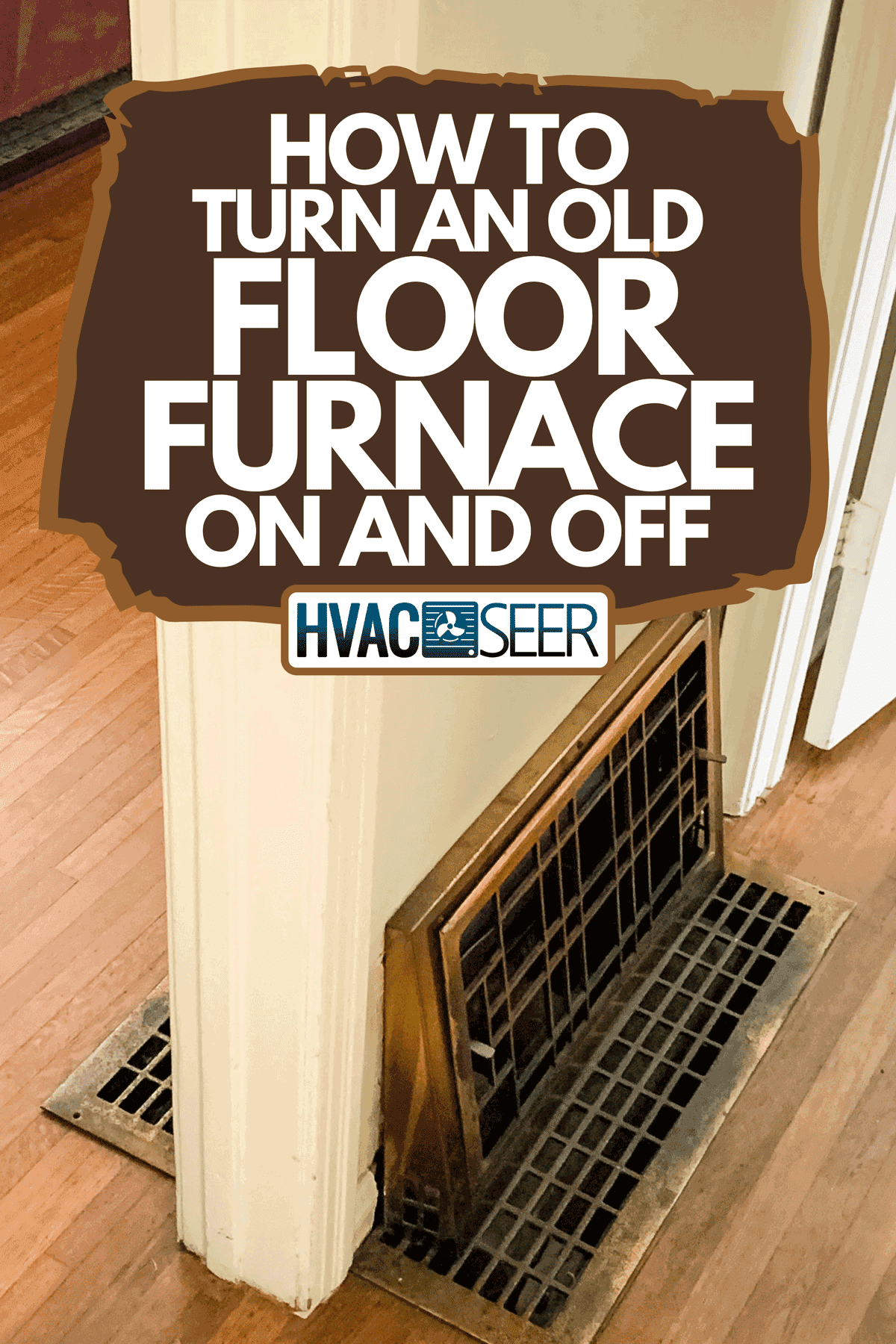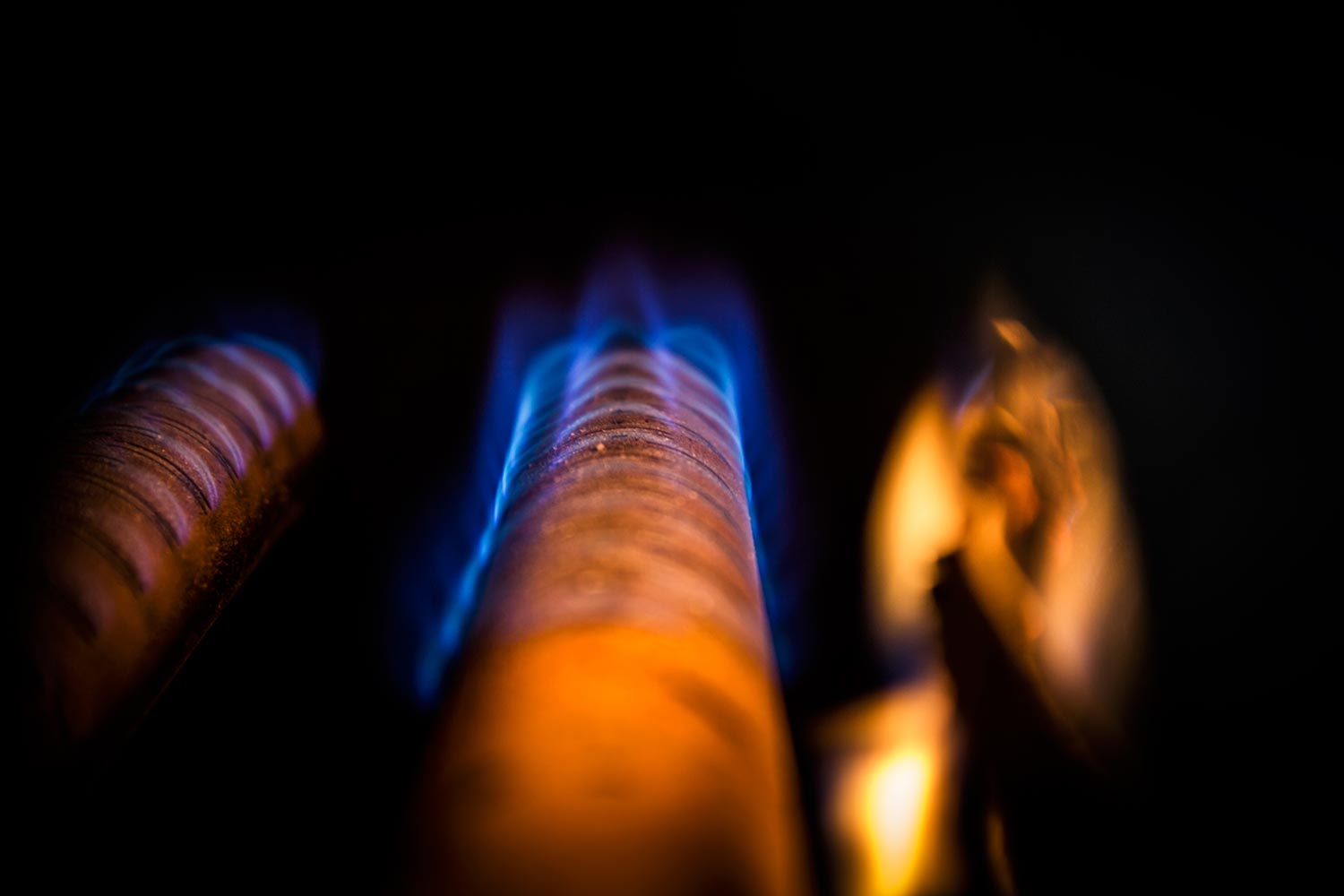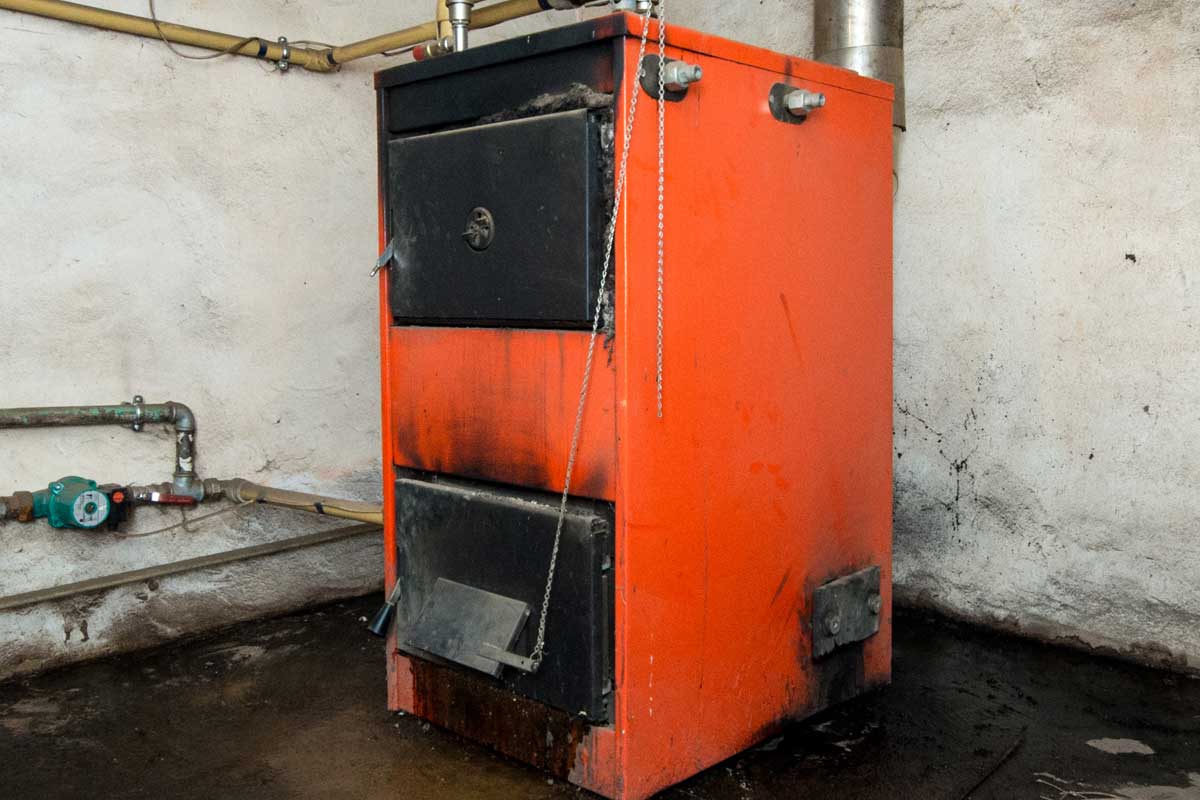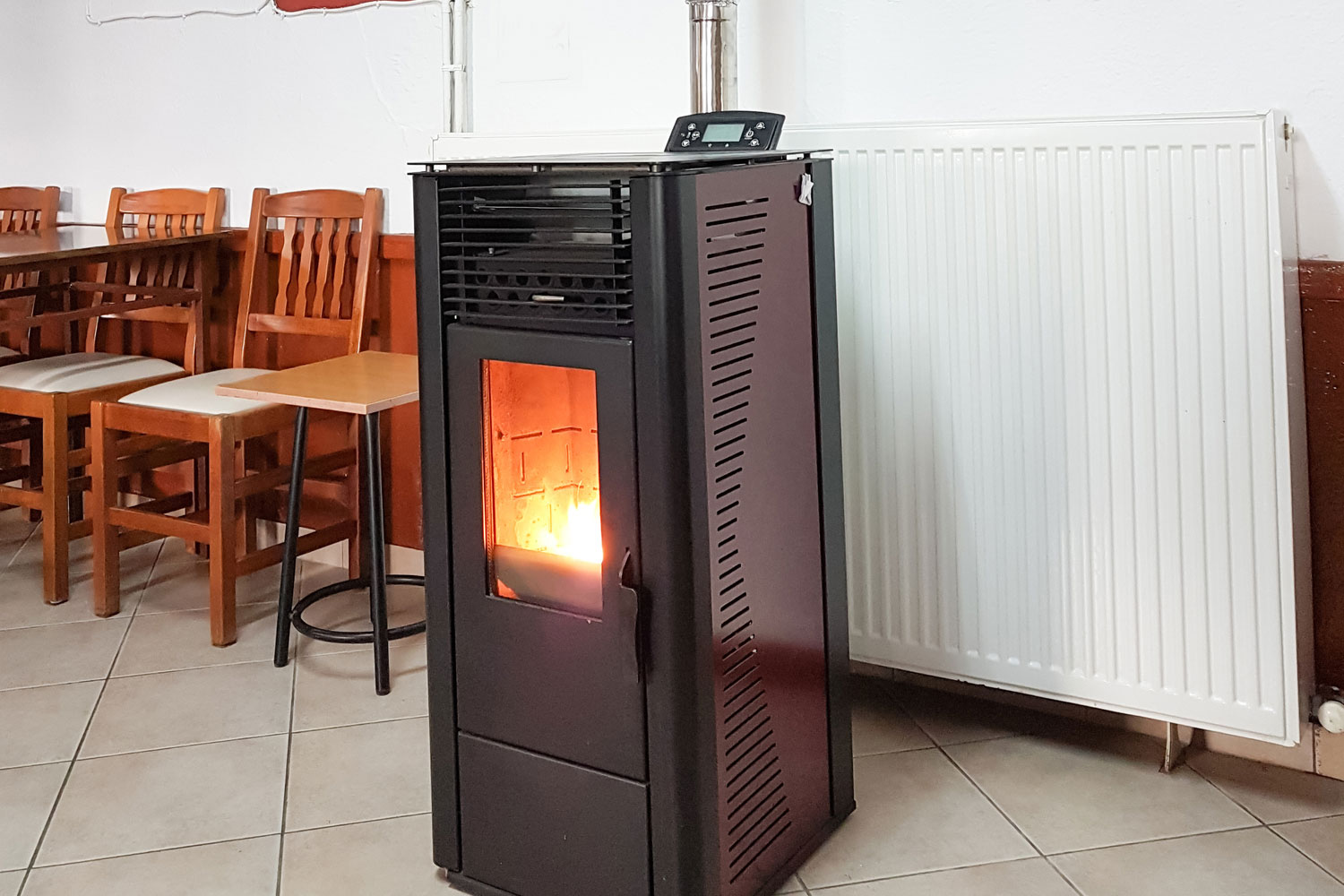Old floor furnaces operate similarly to traditional furnaces for the most part. However, turning them on and off may seem a bit confusing if you have never operated one before. They're most commonly seen in homes that were built over a hundred years ago. But how do you turn an old floor furnace on and off? We have researched these types of furnaces, and in this post, we will go over them.
Most of these furnaces have the pilot light and knob located in the same area, which is right at the top of the vent. Here are the steps to light it:
- Turn the thermostat off
- Turn on the pilot light switch
- Press the ignition switch
You may not have the instructional manual that came with your old floor furnace, but you can always seek the assistance of an HVAC technician if you run into issues lighting the pilot light. But let's take a look at how to do it.

Steps To Turn An Old Floor Furnace On And Off
1. Turn the thermostat off
First, turn the thermostat off or to the lowest temperature setting. Then take the grill off the floor. Note that some grills may have a tight-fitting, so you may need to use a flat head screwdriver to pry it up in the corner.
After removing the grill, you should see the pilot switch and the control rod for the furnace.
2. Turn on the pilot light switch
Turn the switch to the position labeled as "Pilot." Next, take the furnace key and place it on top of the control knob to turn the furnace to the on position.
The gas may take anywhere from 1 to 5 minutes to turn on. Turn off the furnace if you do not smell gas after this time, as there is likely an issue with your furnace and its gas source.
3. Press the ignition switch
There should be a small hole in the middle of the furnace where you can see the pilot light turn on. Next, press down the control rod and hold it in while pressing the igniter button. You should see a small blue flame initially. And once the furnace turns on, you should hear the furnace blower kick on.
Then turn the pilot knob to the position labeled "On." Next, place the grill back on the floor and turn the temperature on the thermostat to the desired setting. To turn the furnace off, turn the same knob to the "Off" position after turning off the heat at the thermostat.
How do you know if your furnace is running?

If you have a gas furnace, you should hear the flames blowing if you stand next to the furnace. But if you don't, you can also slide off the front panel and look inside of the blower to see the heater exchange.
If you have an electric furnace, you may only hear a light humming coming from the unit, but you should see the coils inside the heat exchange turn a bright orange color and you should also feel the heat from the vent ducts directly above the furnace.
If you suspect that your furnace is not running properly, here are a few things to consider. These are the most common signs that a furnace isn't running properly and may need to be replaced or repaired.
The energy bill is higher than normal in the winter
Take a look at your energy bills for the past two or three winters. Has there been a steady increase in the cost of heat supply? Is there another reason to account for this cause? For example, are there more people living in the home?
Is there insulation that needs to be upgraded? Have you had new windows installed? If not, take the age of your furnace into consideration. Is your is your furnace over 15 years old? If so, it may simply be running on its last leg.
Loud noises coming from the furnace
Another sign that your furnace is going bad is when it begins making strange sounds. If you hear loud banging, rattling, or random pops while it's in operation, there may be and repair that needs to take place.
Yes, furnaces will typically have some noise during operation, but the noise shouldn't be overbearing, and it shouldn't be any loud thuds, squeaking, or banging.
Furnace won't stay on continuously
Sometimes a furnace that cycles constantly is in need of a repair regarding the high limit switch. However, in some cases, the furnace may not stay on because the blower motor is going bad and needs to be replaced.
Often times when the motor goes bad, the entire furnace has run its course and may need to be replaced as well. In this case, it's best to have an HVAC technician take a look at the furnace to see if it's worth the repair.
The repairs are becoming more costly
If you notice the furnace requiring more repairs each season, it may be a sign that it may be on its last leg as well. If the furnace repair costs are starting to add up to at least the cost of the total furnace, then it may not be worth the repair.
This is definitely the case if the furnace is anywhere from 10 to 15 years old. It may be helpful to take a look at your last few years of repair costs to compare them with the potential cost of an entirely new unit.
How do I light the pilot on my old furnace?

The steps to light the pilot on your furnace will depend on the make and model of your furnace. However, if you have a furnace that has been manufactured within the past 20 to 30 years, you can typically follow the following process to light the pilot light.
- First, turn on the gas valve by turning the knob to "Pilot." In many cases, you will need to press the knob inward while turning it simultaneously.
- Next, use your other finger to press the igniter button until the pilot light is lit. In some cases, you may need to use a grill lighter or long a match and hold it over the pilot light orifice.
- Hold the ignition button for about 10 to 20 seconds after the pilot light turns on. This will give the furnace's thermocouple more time to warm up and prevent it from immediately going out.
However, it's worth noting that most modern furnaces these days will have a hot surface ignitor or electric igniter. So you won't need to use a match or igniter; you can simply press the buttons.
Also, most electronic igniters will come on automatically. If they don't come on, it's best to first review the instructions to light your furnace in your user manual.
Where is the on/off switch on a furnace?

The power button for a furnace is usually located on the side of the furnace or on a nearby wall. Oftentimes the power button will look like a regular light switch that you can flip up and down.
Any time that you plan to change the filter, perform a repair, or clean the furnace, be sure to flip the power button down so that the furnace is completely off during this time. You'll also want to shut the unit off at the thermostat as well.
Should the pilot light always be on in a gas furnace?
For the most part, yes. During the winter months, when the furnace is used regularly, the pilot light will be on. However, during the offseason, when the air conditioning is typically used instead of the heat, the pilot light should not be on.
How do you manually ignite a furnace?
Manually lighting a furnace typically involves lighting a pilot light with direct heat, such as a grill lighter or a long match. This is only possible on older furnaces, as most modern furnaces have a pilot light knob and igniter switch to perform this action.
These furnaces typically have a glass partition covering the pilot light, which blocks direct access to it. And many modern electric furnaces will not have a pilot light but a surface ignition panel instead. However, some older models may still have a temporary pilot light.
Wrapping Things Up
Operating an old floor furnace may seem a bit archaic. However, they work just as well as traditional furnaces in terms of heat output.
If you find that your floor furnace is having trouble keeping the pilot light lit or you suddenly smell the odor of gas, turn the furnace off immediately and contact an HVAC technician. This is usually a sign of a gas leak or issues with the gas valve, and it can be highly hazardous.
Before you go, be sure to check out our other posts:
